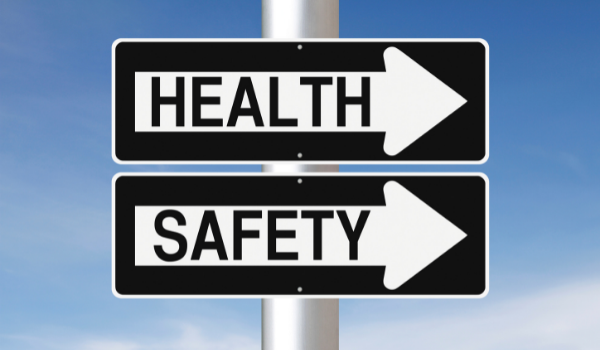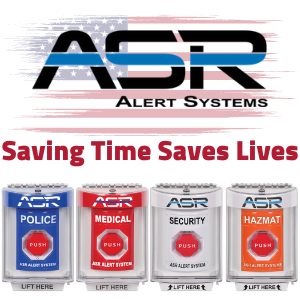
Violence in Healthcare Settings
JUPITER, FL / AGILITYPR.NEWS / April 13, 2022 / Historically, healthcare and social services settings have been a hotbed for violence. Patrons of these facilities are many times in a mental health crisis situation spurred by a variety of circumstances. In an emergency, tensions are already high. Pain, upsetting medical diagnoses', mind and mood-altering medications/drugs, and disease progression can also cause agitation and violent behaviors. These combined circumstances can lead to more volatile conditions for those employed in these settings.

Bureau of Labor Statistics data show that 70 to 74% of injuries from assaults at work (that required days away from work) occurred in the healthcare and social services settings. For healthcare workers, assaults comprise 10-11% of workplace injuries involving days away from work, as compared to 3% of injuries of all private-sector employees.

Risk Factors for Violence in Healthcare Facilities
The risk factors for violence vary from hospital to hospital depending on location, size, and type of facility. Per the CDC, common risk factors for hospital violence include the following:
- Working directly with volatile people, especially, if they are under the influence of drugs or alcohol or have a history of violence or certain psychotic diagnoses
- Working when understaffed-especially during meal times and visiting hours
- Transporting patients
- Long waits for service
- Overcrowded, uncomfortable waiting rooms
- Working alone
- Poor environmental design (that may block employees’ vision or interfere with their escape from a violent incident)
- Inadequate security (and mental health personnel) on site
- Lack of staff training and policies for preventing and managing crises with potentially volatile patients
- Drug and alcohol abuse
- Access to firearms (and other weapons)
- Unrestricted movement of the public
- Poorly lit corridors, rooms, parking lots, and other areas
- Lack of means of emergency communication
- Unrestricted movement of the public in clinics and hospitals
Does Your Healthcare Facility Need a Violence Prevention and Violence Response Plan?
According to SHRM, nearly one in seven employees feels unsafe at work. Given that, it is up to employers to implement workplace safety and security plans that help employees prevent, prepare for and respond to workplace violence situations.
Related: Patient killed after raising scissors in Cleveland Clinic emergency room
Even under normal circumstances, all organizations need violence prevention and violence response plans. In the best of times, a plan is still necessary as employers have a duty of care to their employees and patrons. Healthcare facilities have an even greater responsibility given the known susceptibility to violence that these organizations are exposed to.
Since the onset of the global pandemic and now coupled with extreme global financial insecurities, doctors in emergency departments have been watching a steady incline in the number of patients arriving with mental health concerns and in behavioral health crises. Leaders from around the globe have been sounding the collective alarm on this as many facilities simply do not have the resources to handle this influx of cases. With continued societal upheaval, this crisis will only continue to worsen. This is adding to facility volatility and will inevitably lead to even more violent situations.

OSHA-Identified Control Measures
OSHA has published a series of controls that all industries can consider when thinking about security issues and workplace violence. Engineering Controls can include:
- Assessing plans for new construction or physical changes to a facility or workplace to eliminate or reduce security hazards;
- Installing and maintaining alarm systems and other security devices like cellular phones and private-channel radios, hand-held alarms or noise devices, and panic buttons;
- Establishing response procedures when an alarm is triggered;
- Installing fixed metal detectors or providing hand-held metal detectors, where appropriate and in accordance with recommendations of security consultants, to detect guns, knives, or other weapons;
- Using a closed-circuit recording on a 24-hour basis for high-risk areas and placing curved mirrors at hallway intersections or in areas where sightlines are obscured;
- Locking all unused doors to limit access but in accordance with local fire codes;
- Installing bright, effective lighting, both indoors and outdoors, and replacing burned-out lights, broken windows, and locks; and
- Locking automobiles at all times and keeping automobiles well maintained for use in the field.
Administrative controls —management policies and workplace practices—to prevent or mitigate workplace violence can include:
- Conducting workplace violence hazard and security analyses, with a list of risk factors identified and how specific hazards will be addressed.
- Developing a comprehensive, written workplace violence prevention program, or improving an existing one, then reviewing it at least annually for any needed updates or improvements.
- Designing a recordkeeping system for reporting incidents of violence and reviewing reports after each incident and at least annually to analyze incident trends.
- Using trained security officers to deal with aggressive behavior.
- Developing procedures and responsibilities to be taken in the event of a violent incident.
- Training emergency response teams responsible for immediate care of victims and debriefing victims and coworkers, as well as providing Human Resources employee assistance following incidents.
- Promptly responding to all complaints of violence, following written security procedures, and providing management support during emergencies.
- Providing employees with training on workplace violence and advising employees of company procedures for requesting police assistance or filing charges when assaulted and helping them do so.
Related: Active Shooter Training

CONCLUSION:
Great hospital leadership begins with management and decision-making staff recognizing that workplace violence is a safety and health hazard. Every hospital should have, or develop, a violence prevention program and violence response plan. Every hospital faces its own unique set of risk factors and therefore needs to address these factors with targeted strategies to reduce the potential impacts should a violent act occur. Programs and plans should be readily communicated to and practiced by all hospital staff so that consistent vigilance remains top of mind.
Have questions or wish to schedule a virtual demonstration? Please contact us.
Contacts

Shay Discepolo
Media
shay@asralertsystems.comJupiter, FL
Phone: 800-722-7601
https://www.asralertsystems.com/blog/violence-in-healthcare-settings